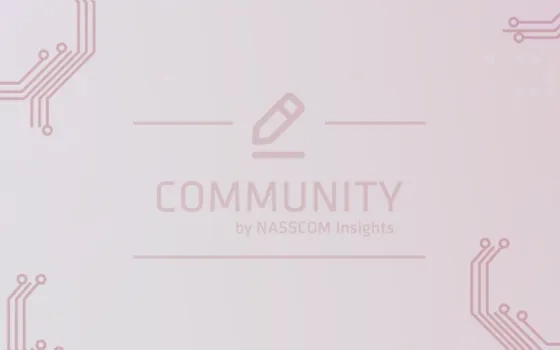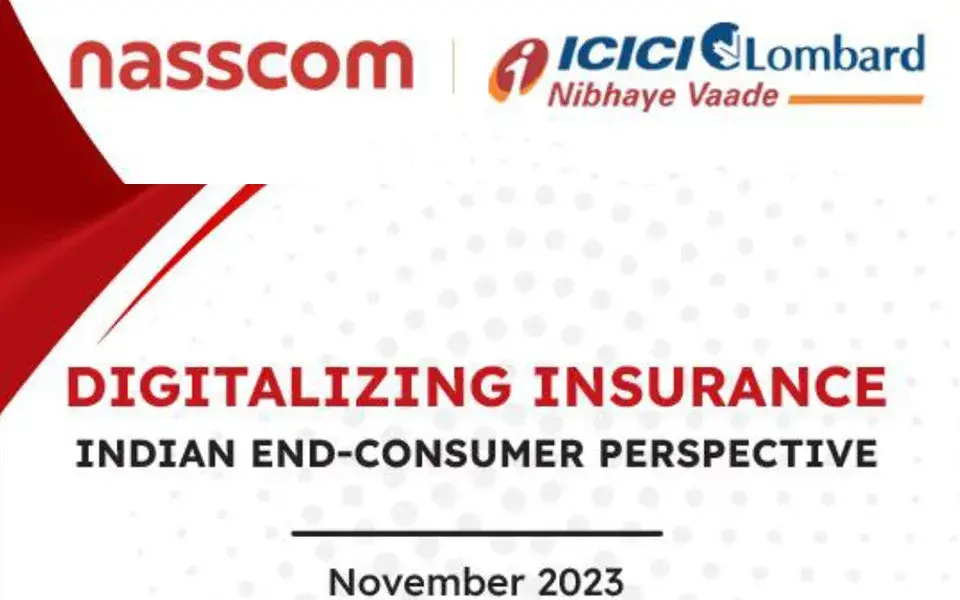Three years ago, the indirect tax system in India went through a massive change and taxpayers across the country were introduced to a consumption-based indirect tax, the Goods and Services Tax. Known as India’s most significant and most historic indirect tax reform, this new system revolutionised the way India perceived indirect tax by introducing uniform taxation under its philosophy of one nation, one tax. GST as a consistent taxation system replaced indirect taxes like excise duty, service tax, additional duties of excise and other duties, customs at the Central Government level as well as State VAT, luxury tax, entry tax, central sales tax, entertainment and amusement tax, taxes on advertisements, taxes on lotteries and purchase tax at the State Government level. This marked the start of a tax revolution in the country – “One Nation, One Tax”.
As a nation, we have come a long way since the Goods and Services Tax was first implemented on July 1, 2017. Here are the highlights of the Goods and Services Tax journey since its implementation in India, its challenges and achievements, its future prospects and its most recent efforts to revive the nation from the economic slump caused due to the novel Coronavirus outbreak and subsequent nationwide lockdown.
India launched the world’s most extensive coordinated lockdown in March 2020 due to the outbreak of COVID-19. Naturally, this lockdown brought already struggling businesses to a standstill. 2019 already saw India in an economic slump, and the Union Budget 2020 was mainly focused on introducing automation and advocating digitisation in a bid to crackdown on tax evasion and propose measures for easier GST compliance. Two significant reforms that were expected to be rolled out in April 2020 were e-invoicing and the new returns system. These reforms were expected to further the nation’s Digital India campaign with digitised tax management and tax operations. Unfortunately, the reforms were deferred due to the Coronavirus outbreak.
This meant that all eyes were on the COVID-19 economic stimulus relief package that was announced by the Centre after India went into lockdown in March 2020. This economic stimulus package eased several concerns of the otherwise troubled MSME sector who contribute to a large chunk of the Indian economy.
Let’s begin with highlights from the Atmanirbhar Bharat Abhiyan or Covid-19 economic relief package.
Changing the definition and thresholds for MSMEs
In a move that would greatly benefit micro, small and medium-sized enterprises across the country, India announced a change in the definition of MSMEs and their thresholds for investments. MSMEs were previously categorised based on the amount of investment in the plant and the machinery. As per the new definition, MSMEs would be classified based on turnover and not investment. This allows more businesses to establish themselves in the manufacturing and services sectors.
Extensions in deadlines
Like many other countries introducing reform measures, India also extended the deadline for filing of tax returns in a bid to provide relief to taxpayers. It also announced a blanket force majeure extension of six months on all real estate and construction projects that had fallen behind and were now facing penalties and liquidity issues. A simple provision was made for all Government contracts that have fallen behind their deadlines due to the lockdown. Additionally, the Government increased the validity of e-way bills that had expired due to the log jam of nearly 6 lakh consignment vehicles that were stranded on Indian National Highways because of the lockdown.
IBC initiative threshold increased to benefit MSMEs
The Centre announced that no new insolvency would be initiated for a period of one year under the Insolvency and Bankruptcy Code. Additionally, in a move to benefit MSMEs, the Centre announced a threshold of one crore to initiate the IBC process.
Industries get a liquidity boost
In a bid to boost liquidity among industries, the Centre announced schemes worth ?45,000 crores under the Partial Credit Guarantee for NBFCs. A boost of ?90,000 for power distribution companies was also announced.
The Atmanirbhar Bharat Abhiyan economic stimulus package is expected to inject liquidity worth 10% of India’s GDP and will help industries, especially MSMEs, get back on their feet. This package was widely accepted and welcomed by industries across the country.
GST council meetings over the last three years
The GST Council is an apex member committee established to modify or reconcile laws or regulations under the GST framework. This Council generally makes recommendations on issues concerning threshold limits, deadlines and extensions, tax rates on goods and services, etc. This Council meets at regular periodicals and is presided by the Union Finance Minister, Nirmala Sitaraman.
Over the last three years, nearly 40 GST council meetings were held, and each has featured changes in tax slabs, tax rates, amendments to GST law etc. These council meets have announced significant reforms and measures to facilitate an efficient tax system. In 2017, the GST council announced the suspension of return forms GSTR2 and GSTR3. The third return form was replaced by a composite return form GSTR3B. 2018 saw another historic moment in the history of the Goods and Services Tax as the e-way bill system was introduced. This system would help monitor the movement of goods across the country and keep tax evasion in check. Many important updates were announced across GST council meets in 2019, including restricting the threshold for claiming the input tax credit for invoices or debit notes to 10% from 20%. The GSTN also announced the blocking of e-way bills for those taxpayers who failed to file their returns within the stipulated deadline. The last GST council meet was particularly significant as it was held virtually amidst a nationwide lockdown.
Highlights from 40th GST Council Meeting
- The Council announced a reduction in the late fee for delayed filing and payment of GSTR3B for the tax period of July 2017 to January 2020. This measure was announced to speed up pending GSTR3B return filing.
- The Council also announced a reduction in the rate of interest for late furnishing of returns for February, March and April 2020 for taxpayers who fall under the category of small taxpayers.
- The late fee and interest were waived off for delayed filing of GSTR3B for the supplies of May, June and July 2020, provided they are furnished by September 30, 2020.
- The Council announced an onetime only extension in the period for seeking revocation of cancellation of GST registration for taxpayers who could not restore or revoke their GST registration cancellation due to the lockdown.
Challenges under the Goods and Service Tax framework
The Goods and Services Tax brought with it a plethora of benefits. It helped eliminate the cascading effect of taxes; it ended the Inspector Raj giving the supply chain industry a boost, it regulated unorganised sectors and categorised businesses under a threshold. It also shifted the tax payment structure to incorporate a digital mechanism for easier access and faster filing. While this tax system has done a lot to benefit the country, it is still in its nascent stages and continues to face several challenges.
At this point, the most pressing challenge for the Goods and Services Tax is reviving the country from the economic slump caused by the Coronavirus pandemic and subsequent nationwide lockdown. While the Centre has proposed and implemented many relief measures under the Covid-19 economic stimulus package, other challenges need to be addressed as well.
Deferred proposals
The Goods and Services Tax is known to be continually evolving as such new proposals to facilitate better reconciliation of refunds, more accessible filing of returns etc. have been designed over the last three years. While some suggestions like the e-way bill system became a reality, others like the New Returns System or GST 2.0 and e-invoicing are still in the pipeline. These new systems were expected to be rolled out earlier in 2020 but have now been deferred due to the lockdown and might be launch in October 2020. This could be further pushed.
Complex tax slabs
As a nation, we are known to be people pleasers. So it comes as no surprise when India constantly fluctuates its tax slabs offering short term relief to specific industry sectors. However, this practice of continually switching between tax slabs and tax rates needs to be put to rest, and the Centre must adhere to a simple tax slab structure to reduce the confusion around GST return filing. Additionally, fluctuating tax rates often lead to unethical profiteering practices under which the consumer does not benefit from the reduced tax rate and usually ends up paying a much higher price on purchases. Furthermore, a hike in the tax rate (like the recent one on smartphones) weakens demand, demotivating manufacturers who have been championing the country’s Make in India cause.
Simpler filing structure
The current GST return filing structure is complex and cumbersome – it needs the taxpayer to pay minute attention to detail because any errors could reverse the input tax credit deposited in their accounts and getting a refund is a lengthy and painful process. The New Returns System is supposed to make return filing much more straightforward but is yet to be implemented.
Ambiguous and conflicting AAR judgements
In the last few years, taxpayers have witnessed conflicting rulings from various benches of the Appellate Authority for Advance Ruling across different States which leads to confusion among taxpayers. AARs are quasi-judicial authorities established to provide taxpayers clarity on the interpretation of GST laws. Most recently, the Karnataka and Rajasthan benches of the AAR held different judgements for a similar advance ruling. The Karnataka AAR had ruled that remuneration of executive directors was not liable to GST as an executive director was a company employee. However, a non-executive director’s salary would attract GST under reverse charge mechanism. The Rajasthan AAR ruled that the services rendered by a director to a company for which consideration is paid to him under any head are liable for GST under the reverse charge mechanism. These contradictory rulings left taxpayers confused, and the Central Board for Indirect Taxes and Customs had to intervene and clarify that remuneration to independent directors who do not qualify as employees of an organisation would attract GST. Additionally, more than 80% of rulings, since the establishment of the AARs, have been revenue biased, leading to disgruntled taxpayers.
Cracking down on tax evasion and tax fraud
GST tax evasion and tax fraud, including use of fraudulent invoices, fake e-way bills, loopholes in the indirect tax system, inaccurate returns, acts of profiteering have been leading to massive losses in revenue collection. A news report in March 2020 states that India has faced over ?70,000 crore worth of losses due to tax evasion. Most recently, a tobacco company was caught scamming the Government out of ?200 crores worth of taxes. With GST revenue collections at an all-time low, Centre and State Governments are cracking down on tax evaders and have even set targets for GST authorities to detect tax evasion. The Government has also proposed the use of artificial intelligence, machine learning, stringent checks and harsher penalties for those committing tax fraud in the 2020 Budget reading. However, these measures are yet to be fully implemented.
Expanding the GST purview
Many commodities are still not under the GST purview mainly because the Centre and State are always at loggerheads over revenue collections. While some are in favour of bringing commodities like crude oil diesel, petrol, natural gas and aviation turbine fuel under the GST purview, States are unlikely to favour this move mainly because these commodities are still taxed under the Value Added Tax system, meaning each State is free to imply its own tax rate. For vehicle fuel like petrol, diesel and natural gas, the tax rate ranges from 3% to 20% across various States. But it’s not just fuel like commodities which are being advocated to be brought under the GST radar. Recently, health bodies have recommended that a Corona cess be levied on the sale of products that are likely to make the consumer more vulnerable to contracting the Coronavirus viz. tobacco-based products like cigarettes and bidis.
Much needed reforms under the Goods and Services Tax framework
The GST system in India is continually evolving. While it has its fair share of challenges, it also needs to urgently focus on bringing in measures and reforms that will help make the indirect tax system genuinely beneficial for both the taxpayer and the Government.
Bring in a simpler tax structure
Our overly complicated indirect tax structure often leaves taxpayers confused, which in turn leads to the erroneous filing, litigations and time-consuming refund claims defeating the purpose of maintaining an efficient and evasion free tax system. At present, about 3% of commodities fall under the 28% tax slab, a majority chunk viz. 50% of commodities fall under a blanket 18% tax slab while the remaining fall under the 12% and 5% tax slab. Too many tax slabs can lead to demands for increase or decrease in taxes causing fluctuations. A simpler tax slab structure limiting commodities to three tax slabs is the need of the hour. Experts have recommended a three-slab structure that will help rationalise this indirect tax system. While a tax slab restructures had been strongly hinted in 2019, a change is yet to be implemented. The Government also needs to correct the inverted duty structure. At the 40th GST council meet, Union Corporate Affairs and Finance Minister, Nirmala Sitharaman announced that the GST Council is looking to correct the inverted duty structure under which tax levied on inputs is higher than the tax on finished products leading to a higher amount of refunds which ultimately impact collections. But this has been deferred in the wake of the coronavirus pandemic.
Optimise digital
A major pain point for taxpayers under the GST framework is claiming input tax credit – the process is unnecessarily cumbersome and time-consuming. Moreover, the current GST portal is not capable of handling large amounts of processing tasks all at once. Optimising digital resources will help accelerate the process of claiming input tax credit and increasing the capacity of the portal to handle higher numbers of data processing. Various digital products, including e-wallet, new returns and e-invoicing were created with the view to facilitate easier and efficient tax management. But these offsprings of the GST family are turning out to be the proverbial black sheep and seem to be shunned away every time a rollout is planned. It is essential, now, more than ever, to work on implementing digital practices, especially in light of the pandemic.
Other pressing reforms
Other reform activities that need urgent attention include clarifying the provisions under anti-profiteering laws so that taxpayers can adhere to the prescribed provisions and not indulge in ethical violations or alternatively, taxpayers don’t take any erroneous calls and unknowingly indulge in unethical acts of profiteering. The Government also needs to close the noose around tax evaders as collections continue to fall month on month due to unethical and illegal tax practices. Finally, the Centre needs to urgently figure out and put to rest the battle between the Central and State Governments on sharing of revenue collections. A consensus should hopefully be met at the meeting between Centre and State representatives later this month.
What can the taxpayer do?
While there is a lot that the Government needs to do to facilitate an efficient tax management system, the taxpayers also need to do their bit and contribute to the evolution of the Goods and Services Tax. This includes adjusting their attitude toward the indirect tax system. That means filing their returns on time and not waiting until the last day to file tax returns. Statistics say that a fifth of registered taxpayers will wait until the last day of the deadline to file their returns – this leads to jammed servers, errors while filing followed by cumbersome refund claims. Taxpayers also need to invest in tax technology actively, and automated tax solutions, choose a partner with extensive experience in global tax technology solutions. This will help taxpayers ensure that they have the right guidance for fulfilling compliance requirements and eliminating manual processes through advanced technology.
It is crucial that taxpayers also evolve with GST technology reforms like e-invoicing, e-wallet, QR codes, use of AI to calculate tax liabilities etc. This makes tax operations a lot more efficient, their compliance errors are dramatically reduced, and both parties benefit from this indirect taxation system.
Moving forward with Goods and Services Tax
India has had a lot to learn in the last three years since it rolled out the Goods and Services Tax, but the most important lessons were only learnt in the previous few months because of the coronavirus outbreak. Moving forward, India needs to focus on helping businesses maintain liquidity with faster processing of refunds. The Centre also needs to focus on better utilisation of input tax credit. Perhaps we could take a page from the Finnish Government’s indirect tax book and consider using accumulated ITC as credit. India also needs to focus on faster dispute and reconciliation resolution. Lastly, this pandemic might have put a damper on our economic conditions, but it has also placed a golden opportunity before India. With an anti-China sentiment doing the rounds, India can fill the manufacturing void left by China and can rise to become a global manufacturing and supply chain hub. Naturally, our indirect tax system will need to be moulded or modified to ensure ease of business in the country for both domestic as well as international businesses.
Avalara is an experienced application service provider (ASP) and partner of authorized GST Suvidha Providers (GSPs). To understand how our cloud-based application Avalara TrustFile GST can help you with GST compliance including e-invoicing, contact us now.













